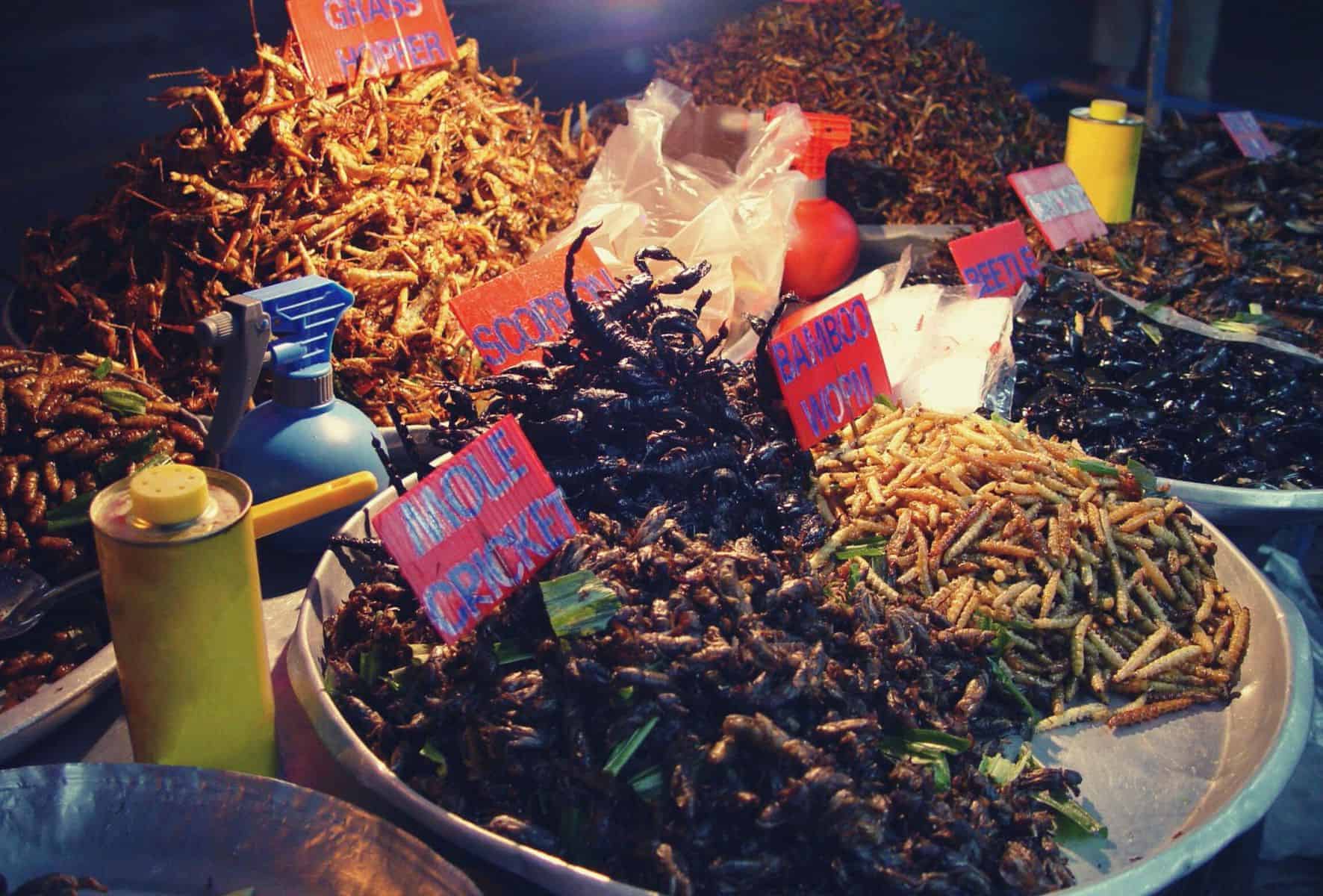I guess there’s no easy way to say this; today, we’re going to talk about eating bugs. Snackin’ on creepy crawlies, delicately dining on spiders, and frying up our Formicidae friends is the point of discussion, and I’m looking forward to it no matter how it tastes.
Which, it turns out, isn’t that bad.
Besides the benefit of learning something new, there are some compelling reasons to learn about bugs and how to eat them. It’s a useful basic survival skill to have should you find yourself in danger, or just plain cool if you want to impress/gross out your friends. Knowing what edible bugs to eat and how to cook them is powerful information.
Table of Contents
Prevalence of Eating Bugs Worldwide
Two billion people on this planet eat edible bugs, and that comes out to about 80% of all countries on earth. That’s a lot of people munching on crickets. But why are they doing it?
Two Billion Bug Biters Can’t Be Wrong
That’s a lot of people munching on insects worldwide. It’s not an act of grabbing a handful of worms and cramming them into your gullet, though. Eating insects and bugs is a culinary staple in most countries on earth and people go to great lengths to cook a tasty meal like anywhere else.
I work with a few men from Cambodia who are never shy about offering their advice on how to catch and cook-up everything from crickets to spiders to grasshoppers. One co-worker’s wife whipped up a batch of crickets fried with oil and flower and tossed with garlic, ginger, and cayenne pepper, and they were pretty damn good. Kind of reminded me of popcorn. With legs.
In the Americas bugs are becoming a more regular addition to our menus, or at least in our snacks. You can find scorpions and spiders encased inside of lollipops regularly. They might be sold for shock value, but some confectioners are intent on adding bugs to our menu as a sweet treat.
Nutritious and Packed With Protein
Bugs are oozing with protein, iron, calcium, and healthy fats. For example crickets are composed of way more protein than beef, three times as much to be exact. You can purchase cricket flour to add to your diet and benefit from that pure protein if you don’t want to wait to cook them up yourself.
Eating bugs is also an environmentally smart choice if we consider replacing beef as a primary source of protein. Insects are easier to grow, harvest, and process and also leave a significantly smaller carbon footprint.
Because they are so high in nutritional value, bugs are an excellent option as a food source when in the field.
Edible bugs: Eating Insects for Survival (or Fun)
You’re stuck in the forest and have to wait for help to arrive. You’ve stretched out your food and just ate the last of your supplies, so what next? Besides some wild and edible plants you can forage for, you’ve got food galore in our six, eight, and too-many-legged friends crawling all over the place.
In An Emergency…
Food is food, plain and simple. My man Bruce Lee said “Food is fuel”, so I’m sure he’d have no problem munching on insects, and if Bruce Lee is doing it it’s totally the cool thing to do.
It’s wiser to deal with squeamishness than to starve, and an emergency diet of bugs in the wild is sure to get you to another day.

Ultralight Hiking With a Local Food Source
For ultralight backpackers, ounces count and you know you’re heading into bug city, you could scrap some food in your pack if you’re ready to rely on insects. Grasshoppers, spiders, bees, and beetles are everywhere so why not add them to your camping menu?
On top of that you’re shopping locally! Man, talk about a savvy, hip, and chic choice.
So You’re Ready to Give Eating Bugs a Shot?
Well, alright, that’s the spirit!
But before we get into what you can eat, we need to address what you shouldn’t eat. It’s arguably more important than learning how to saute spiders.
No Bright Colors
Bright, flashy colors are nature’s warning sign that says “Don’t Eat Me”. Most of you will be familiar with the monarch butterfly and its caterpillar, both a flashy and beautiful combination of color. The monarch feeds on milkweed, a plant that makes its flesh poisonous to predators, and it warns those predators with flashy colors.
There are bugs that are colorful but aren’t poisonous, but play it safe and avoid them entirely.
Avoid any bright or hairy insects
Sidenote: Kind of funny that animals avoid bright colors for fear of poisoning themselves, but advertisers grab our attention with those same bright colors. What does that say?
Avoid Anything Hairy
Besides the fact that a bunch of hairy tussock hairs in your gums and throat would be irritating, many insects have poisonous hairs or stingers. Talk about an unpleasant meal.
Avoid Anything Stinky
What a good bit of advice that applies to everything in our lives, not just eating bugs in the wild!
Insects that stink are at the least unpleasant to consume, but the chemicals used to make that stink can be poisonous and irritating.
Always Cook ‘Em Up
Cooking bugs helps to eliminate parasites and other troubling bits found in any wild food. Ignore the temptation to eat bugs raw. I know it’ll be hard, but it’ll be okay.
Besides, cooking insects makes them way better tasting.

You Are What You Eat Eats
If you’re eating a bug, you’re eating everything it’s eaten too. Many insects survive on plants that are poisonous or toxic to our systems. Eating those insects means you’re ingesting those same toxins. Play it safe and avoid them.
Lastly, if you are not sure what is best to avoid, you can also use the armies edibility test to determine whether that creepy crawly is safe to eat or not.
The Edible Bug Menu
Here we go! Let’s take a look at some of the ‘good to eat’ bugs you’ll find in the wild. Even though some of these are safe to eat they aren’t all edible. Follow the guidelines above and consider carrying a field guide to identify specific species.
Always cook the insects you eat! They may contain parasites that are potentially deadly.
And remember that even if they’re “only bugs”, there are still living things. They should be harvested and killed humanely.
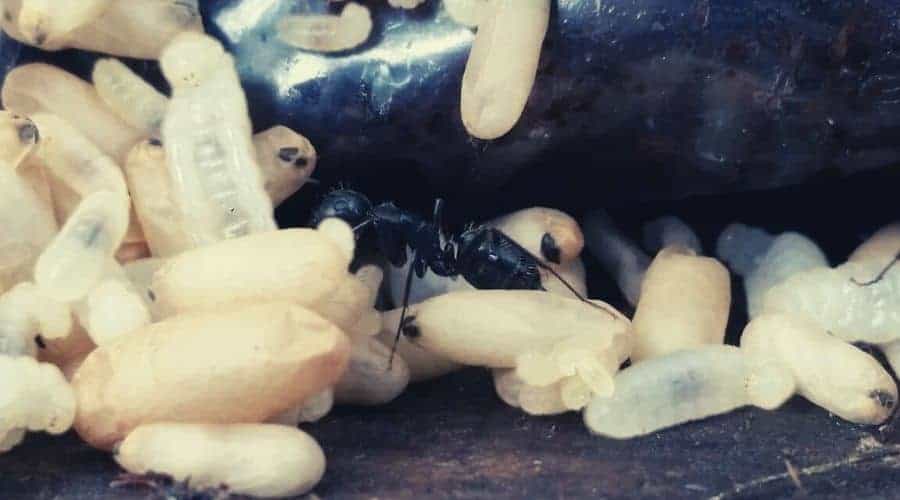
Ants
Eating ants is a lot like individual grains of rice; one won’t do much for you, but when you’ve got a thousand you’ve got yourself a meal. Ants will secrete an acid when threatened which results in a sour flavor. The larvae, however, do not have that scent.
Place a stick inside of an ant hill and wait for the insects to gather on it. Shake the ants into a container but you should roast them quickly to minimize the acid excretion. The larva can be found under rocks and stones, or maybe near the tops of anthills.
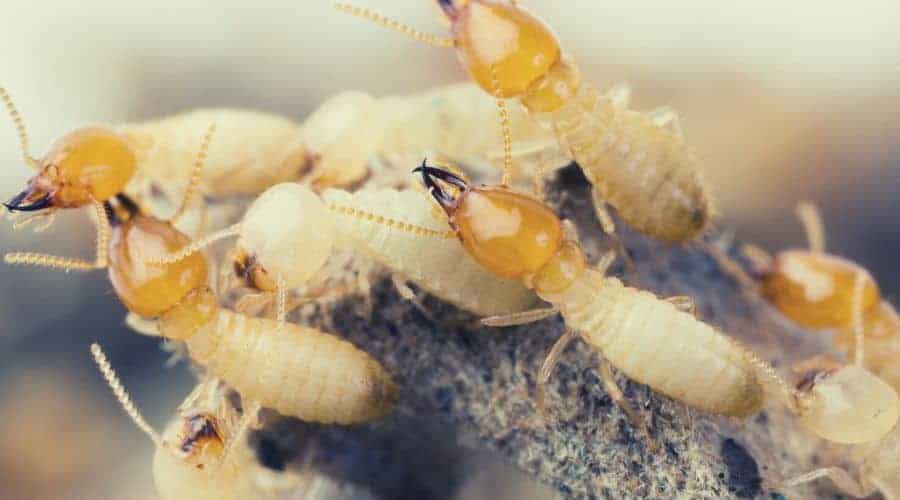
Termites
With a slightly nutty flavor, termites are surprisingly tasty. You could find a termite mound inside of rotting and decomposing trees, or set up netting around a light source to draw termites to you.
This wild edible bug tends to be larger than ants but you’ll still need a lot of them to get a good meal. Cook them in a pan over a light heat but don’t worry about using oils. Termites are oily as it is and tend not to stick.
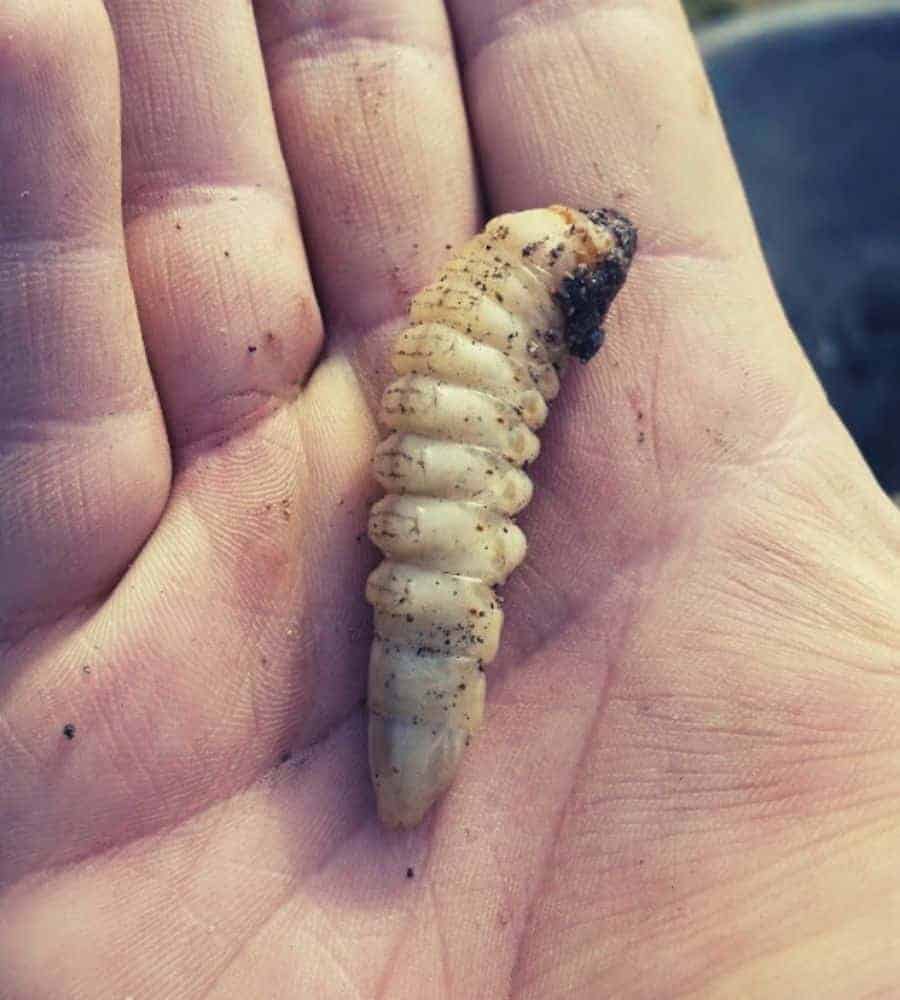
Grubs
Now that there’s a mouthful. Grubs are the larval stage of other insects and tend to be found in rotting and decomposing wood. The one in this picture was found in the roots of a dead dogwood tree.
When cooking you’ll want to roast them on a stick over a fire. It won’t take long to cook so keep an eye on your soon-to-be meal before it burns to a crisp. For a nice preview of what to expect, check out this enticing instructional on cooking grubs. The guy uses Cholula hot sauce, so I’m an instant fan.
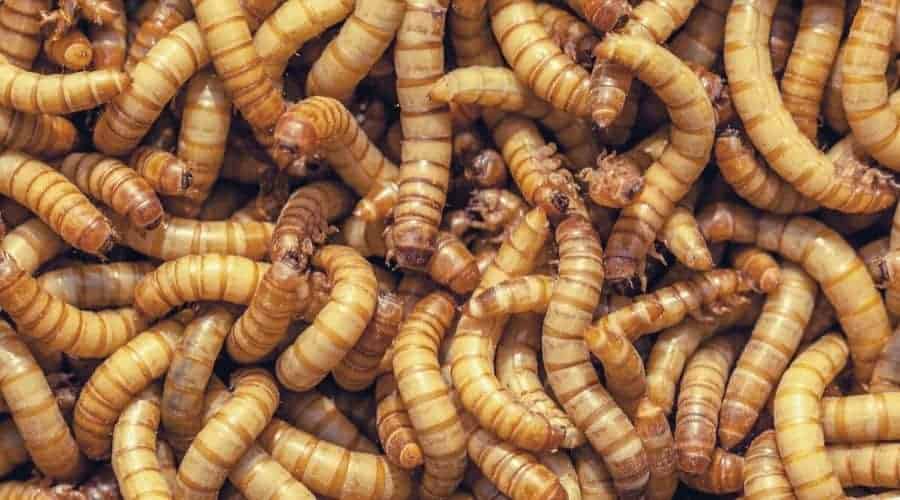
Mealworms
This edible bug can be a challenge to find in the wild. They tend to prosper near humans, but if you’re going to find some in the wild check rotting wood. Unlike other insects mealworms don’t need a lot of moisture to survive, so you can find them in dry locations.
Most cultures recommend “purging” mealworms. This is an act of harvesting your mealworms in a small container and then not allowing them to eat for two or three days to clean them of the nasties. You could still cook them if you can’t wait, but it will be a less pleasant meal.
Roast them in a pan like most of the above, or with a bit of butter and garlic. You did bring butter and garlic in your pack, right?
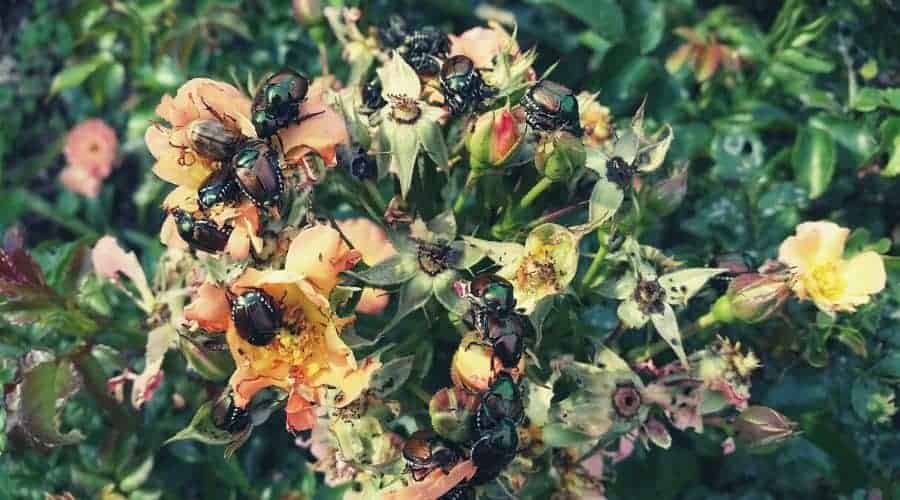
Beetles
You’ll find beetles pretty much everywhere, so you’ve got a meal just waiting for you out there. You can often pluck this edible bug wherever you see it and drop it into a cup or container to cook later.
Boil your beetles or, you guessed it, fry them in a pan.
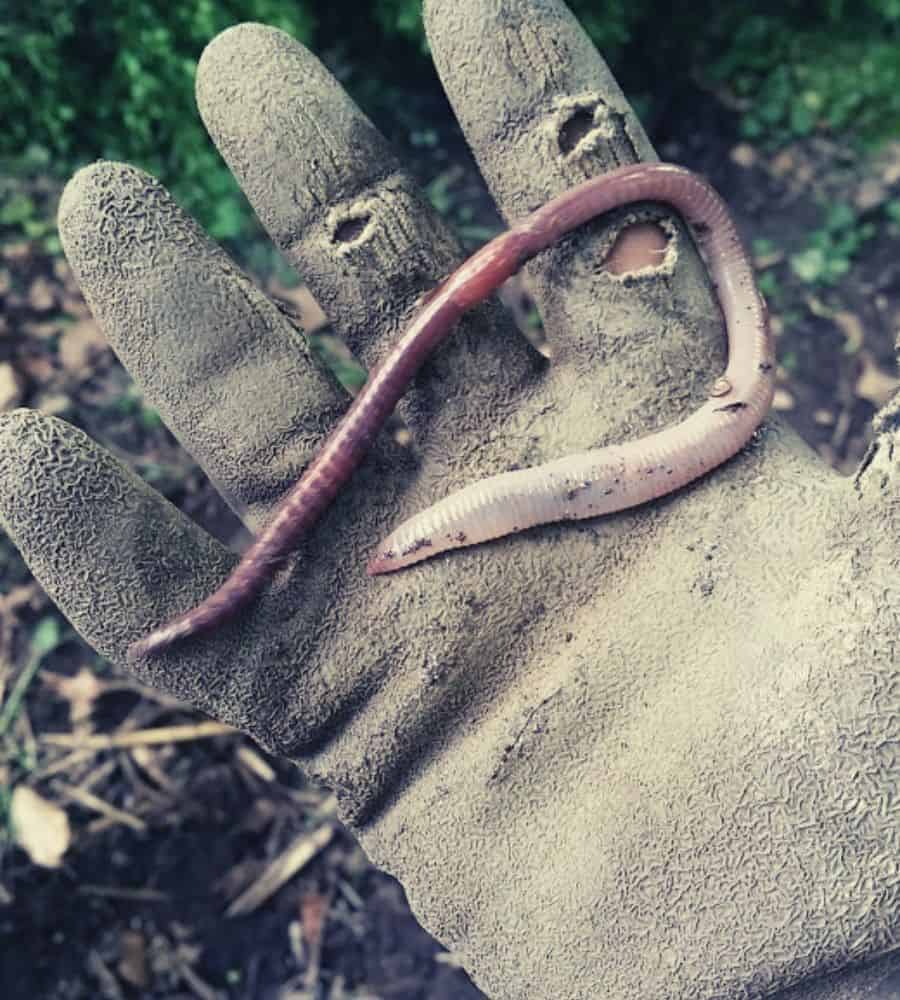
Worms
You’ll find earthworms anywhere you can dig a hole. These suckers are almost 80% protein and are readily found, so brace yourself for an earthy treat. Most sources recommend purging your earthworms in water for 3-24 hours to remove any dirt in their system; others suggest providing ground cornmeal for the worms to eat.
Boil the worms a few times for preparation; you’ll change the water a few times until the mucus from this edible bug is dissipated. Let’s take a moment to relish how disgusting that last sentence was.
After they’re boiled you can cook the worms however you like. Because worms process soils, don’t eat any that you’ve found in polluted locations.
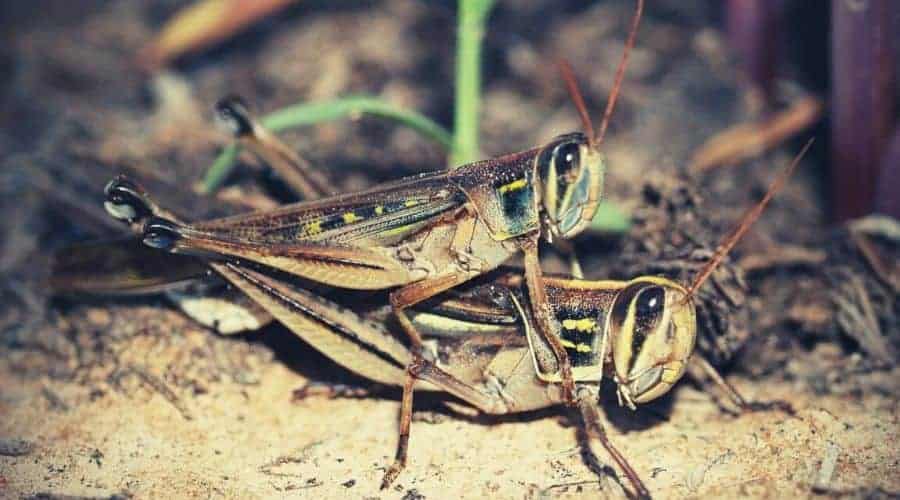
Crickets and Grasshoppers
A familiar sight, crickets and grasshoppers are tasty bugs. They are plentiful, relatively easy to catch, and cook up quite nicely. Grasshoppers may need to have their rear legs removed after cooking, but otherwise they’re ready to be downed.
Fry them in oil with a little flour to get the most out of this meal.
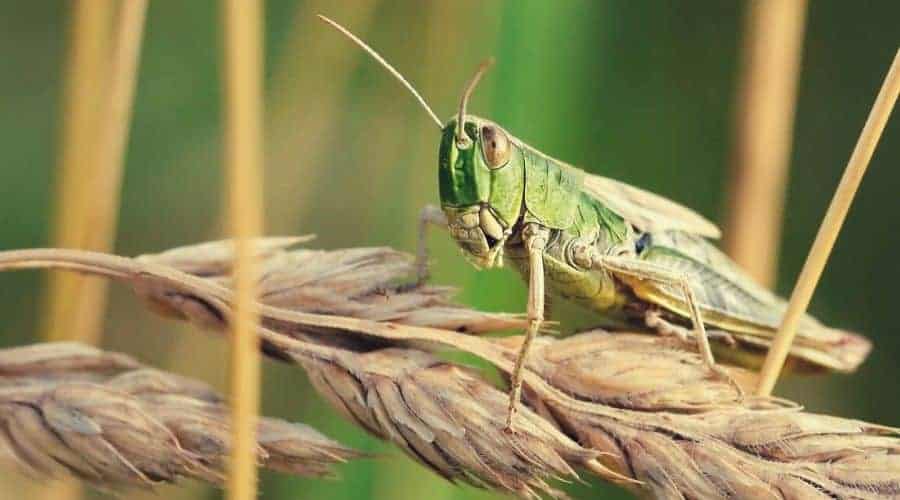
Locusts
Similar to grasshoppers, locusts are much larger and promise a more significant meal. They’re found in massive quantities, too, so this edible bug can contribute to a bonafide feast.
You can skewer them on a twig and roast them above an open flame. If I were you I’d toss their legs before chomping down.
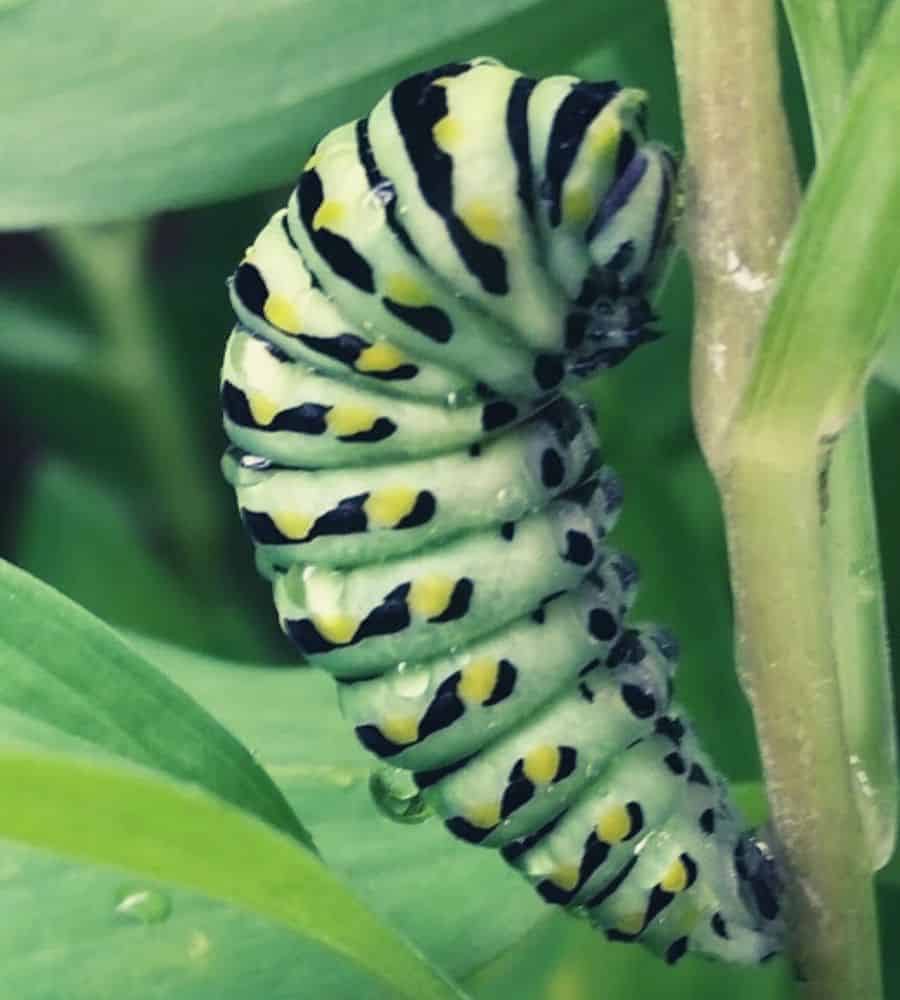
Caterpillars
Caterpillars can be found seasonally, but they’re far trickier to eat than other bugs. Many caterpillars are toxic in some way, so without a positive ID they’re not worth risking a bite of.
If you do find an edible caterpillar, you should squeeze out its guts and roast it over a flame. If you’re able to soak it in salt water for a few hours and then rinse it in fresh water before cooking, you’ll have a better time.
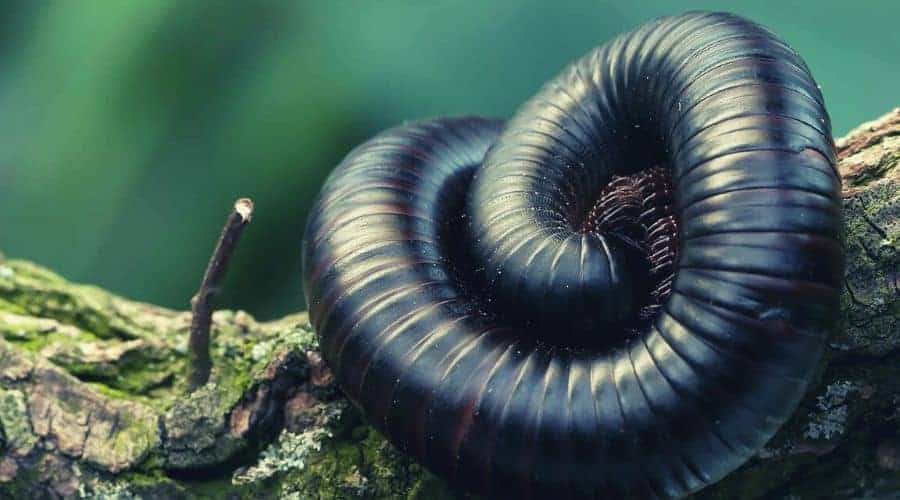
Centipedes and Millipedes
In some areas of the world centipedes and millipedes are relatively benign and are found in any wet, damp location. Other species are incredibly toxic or venomous, so save yourself the trouble and simply avoid eating a centipede or millipede.
This insect is listed here just to give you a warning not to consider eating it.
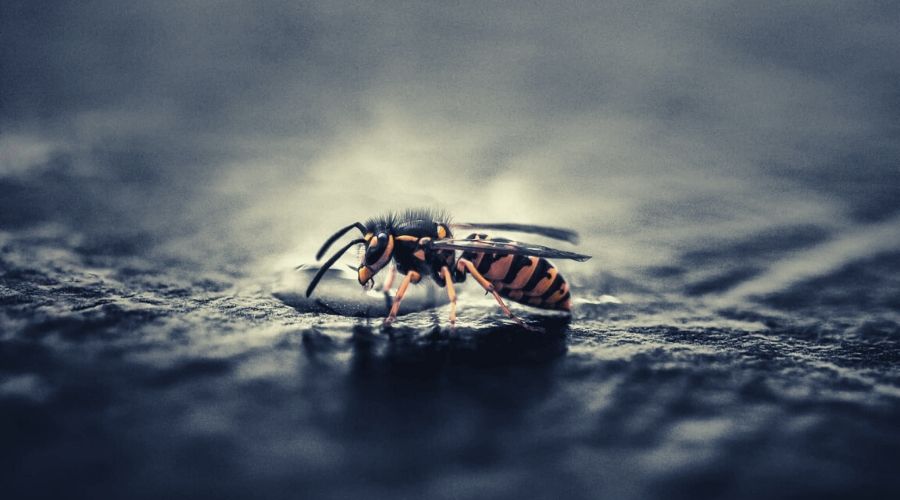
Bees and Wasps
You can find individual bees and wasps pollinating plants and eating old fruits, or if you’re (un)lucky you’ll find their entire hive. Be extremely cautious when hunting out these stinging bugs. A few paper wasps can ruin your day, while a hive of hornets or bees is potentially deadly. If you’re approaching a beehive and the bees are “headbutting” you, it’s a sure sign that they’re fed up and ready to attack.
If you do manage to capture a few, you can remove the stingers and cook them in a pan.
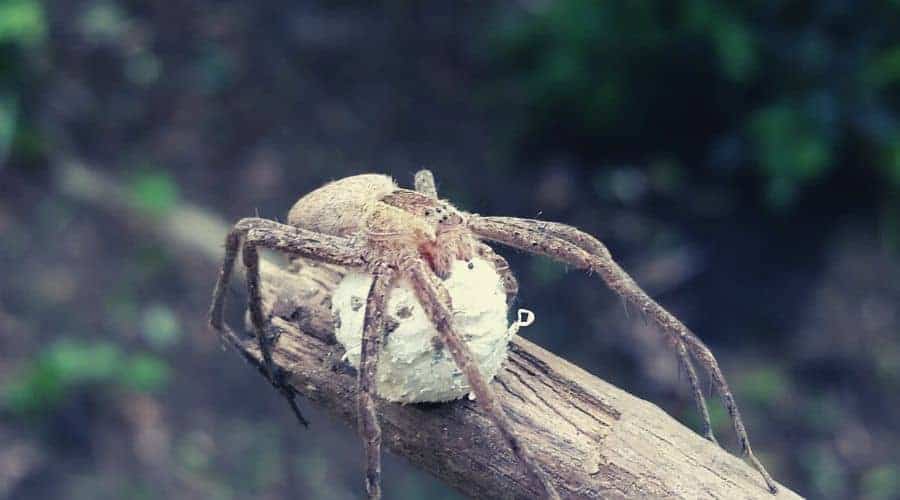
Scorpions and Spiders
These suckers are pretty high up on the “potentially dangerous” column primarily because spiders and scorpions are venomous. You can find scorpions in hot regions while spiders can be spotted almost anywhere. Use a stick to hold the scorpion or spider to the ground before even attempting to catch it.
Scorpions are visible under UV lights which makes spotting them at night easy. Roast scorpions over an open flame until they’re crunchy, while spiders seem to be at their best when fried in oil.
Bug You Later
You’ve got a good primer on what entails eating entomological entrails, and you’ve been warned to avoid eating anything raw, and also to avoid eating anything you can’t positively identify. You’re off to a good start.
My recommendation is to get started with something crunchy, tasty, and inoffensive like crickets and grasshoppers. Once you’re able to wolf ‘em down you can move on to the stingier and grosser bugs on the menu.
Let us know how they taste!
Additional Resources
If you are looking for more information, you can’t go wrong with checking out the following:
- Insects: An edible field guide by Stefan Gates
- Survival Guide to Edible Insects by Fred Damara
- Creepy Crawly Cuisine: The Gourmet Guide to Edible Insects by Julieta Ramos-Elorduy Ph.D.
